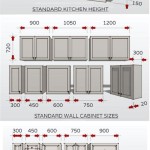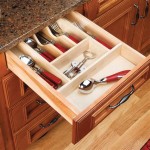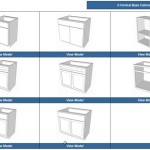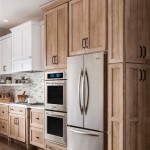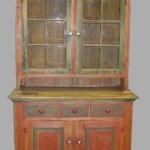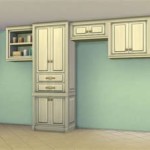Kitchen Cupboard Organizing Ideas: Maximizing Space and Efficiency
The kitchen, often considered the heart of the home, demands efficient organization for optimal functionality. A well-organized kitchen not only saves time and effort during meal preparation but also contributes to a more pleasant and less stressful cooking environment. Kitchen cupboards, in particular, play a crucial role in storage, and their effective arrangement is paramount. This article explores various strategies and techniques for maximizing space and enhancing organization within kitchen cupboards.
De-Cluttering and Assessment
Prior to implementing any organizing system, a thorough decluttering process is essential. This initial step involves removing all items from the cupboards and critically evaluating their necessity. Begin by discarding expired food items, broken or damaged appliances, and duplicates of utensils or tools. Consider donating items that are still functional but no longer used. This process creates a blank canvas for organizing, reducing clutter, and improving visibility of remaining items.
Once the decluttering is complete, assess the available space and the items that need to be stored. Categorize items based on function, size, and frequency of use. Common categories include cookware, bakeware, pantry staples, small appliances, and dishware. This categorization will inform the subsequent organization strategy and ensure that items are stored logically and accessibly.
Measuring the dimensions of the cupboards is a crucial step in planning the organization. Knowing the height, width, and depth of each shelf and cabinet allows for the selection of appropriate storage solutions, such as risers, containers, and organizers. Accurate measurements prevent the purchase of items that are too large or too small, streamlining the organization process.
Implementing Vertical Storage Solutions
Vertical space within kitchen cupboards is often underutilized. Implementing vertical storage solutions can significantly increase storage capacity without expanding the footprint of the cupboards. Shelf risers, tiered organizers, and stackable containers are effective tools for maximizing vertical space.
Shelf risers elevate items, creating additional storage space underneath. They are particularly useful for storing plates, bowls, and small appliances. Tiered organizers are ideal for storing spices, canned goods, and small bottles. They allow for easy visibility and access to items that would otherwise be hidden behind larger containers. Stackable containers, especially those that are modular and transparent, maximize space and allow for quick identification of contents.
Adjustable shelves offer flexibility and can be repositioned to accommodate items of varying heights. If the cupboards have fixed shelves, consider adding aftermarket adjustable shelves to customize the storage space. This allows for optimal use of vertical space and prevents wasted space above shorter items.
For tall, narrow cabinets, consider installing pull-out drawers or shelves. These organizers bring items from the back of the cabinet to the front, eliminating the need to reach far into the cabinet and improving accessibility. Pull-out solutions are particularly useful for storing pantry items or cookware that are frequently used.
Optimizing Corner Cabinet Space
Corner cabinets can be challenging to organize due to their awkward shape and limited accessibility. However, several solutions exist to maximize the usability of this space. Lazy Susans, blind corner pull-outs, and pie-cut shelving units are effective options for optimizing corner cabinet storage.
Lazy Susans, also known as rotating shelves, provide easy access to items stored in the back of the corner cabinet. They are available in various sizes and materials, and can be installed as a permanent fixture or as a removable organizer. Lazy Susans are ideal for storing spices, condiments, and small appliances.
Blind corner pull-outs are designed to utilize the full depth of the corner cabinet. These pull-out systems consist of a series of shelves or baskets that extend from the cabinet, providing access to items stored in the back. They are particularly useful for storing cookware, bakeware, and pantry items.
Pie-cut shelving units are specifically designed to fit the shape of corner cabinets. These shelves are curved or angled to maximize storage space and accessibility. They are available in various materials and can be customized to fit specific cabinet dimensions.
When organizing corner cabinets, prioritize storing items that are frequently used and difficult to reach in other areas of the kitchen. This ensures that the most challenging space is used for the most essential items.
Effective Use of Door Space
The interior of cupboard doors often goes unused, but it can provide valuable storage space for a variety of items. Installing door-mounted racks, hooks, or caddies can significantly increase storage capacity and improve organization.
Door-mounted racks are ideal for storing spices, cleaning supplies, and small utensils. They are available in various sizes and materials, and can be easily installed using screws or adhesive strips. Spice racks mounted on the door keep spices visible and accessible, freeing up shelf space in the main cabinet.
Hooks are useful for hanging measuring cups, spoons, and other small tools. They can be attached to the inside of the door using adhesive hooks or screws. Hanging tools on the door keeps them within easy reach and prevents them from cluttering drawers or countertops.
Caddies are versatile organizers that can be used to store a variety of items, such as plastic wrap, aluminum foil, and cleaning supplies. They typically consist of a series of pockets or compartments that are mounted on the door. Caddies keep these items organized and easily accessible.
When installing door-mounted organizers, ensure that they do not interfere with the closing of the cabinet door. Also, avoid storing heavy items on the door, as this can strain the hinges and potentially damage the door.
Containerization and Labeling
Using containers to store pantry items and other loose goods can significantly improve organization and prevent spills. Clear, airtight containers are ideal for storing flour, sugar, pasta, and other staples. The transparency of the containers allows for easy identification of contents, while the airtight seal keeps food fresh and prevents pests.
When transferring items from their original packaging into containers, label the containers with the name of the item and the expiration date. This ensures that food is consumed before it expires and prevents confusion about the contents of the container. Use waterproof labels that are easy to read and adhere securely to the container.
Modular containers that stack neatly are ideal for maximizing space and creating a uniform appearance. Choose containers that are similar in size and shape to facilitate stacking and organization. Avoid using containers that are overly large or bulky, as they can take up unnecessary space.
Consider using baskets or bins to group similar items together. For example, store all baking supplies in one basket and all snack items in another. This makes it easier to find what you need and keeps the cupboards organized.
Maintaining Organization
Maintaining an organized kitchen requires ongoing effort and a commitment to consistent habits. Regularly decluttering the cupboards, putting items back in their designated places, and cleaning up spills promptly are essential for maintaining organization.
Set aside a few minutes each week to declutter the cupboards and discard expired or unused items. This prevents clutter from accumulating and keeps the cupboards organized. Regularly check expiration dates on food items and dispose of anything that is past its prime.
Make it a habit to put items back in their designated places after each use. This prevents clutter from accumulating and ensures that items are easy to find. Assign a specific location for each item and consistently return it to that location after use.
Clean up spills and messes promptly. Spills can attract pests and create a sticky, unpleasant environment. Wipe up spills immediately to prevent them from hardening and becoming difficult to clean. Regularly clean the shelves and interiors of the cupboards to maintain a sanitary environment.
Periodically re-evaluate the organization system and make adjustments as needed. As needs change, the existing organization system may need to be modified to accommodate new items or address evolving storage requirements. Regularly assess the effectiveness of the organization system and make adjustments as necessary to maintain optimal functionality.
21 Kitchen Cabinet Organization Ideas You Need To Try
25 Best Ideas For How To Organize Kitchen Cabinets
41 Genius Kitchen Organization Ideas The Family Handyman
Inspiring Kitchen Cabinet Organization Ideas Designer Trapped
12 Small Kitchen Organization Ideas Simply Quinoa
How To Organize Kitchen Cabinets In 9 Simple Steps Trusted Since 1922
20 Genius Kitchen Cabinet Organization Ideas A Cultivated Nest
60 Clever Cabinet Organization Tips To Double Your Storage 2024
Kitchen Sink Cabinet Organization Ideas And Solutions Modern Glam
26 Brilliant Ideas For Organizing Kitchen Cabinets Choice Cabinet
Related Posts

